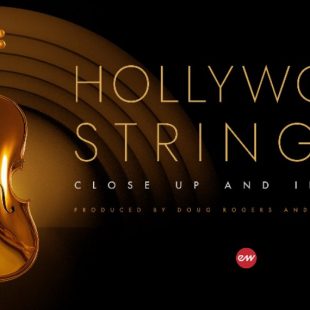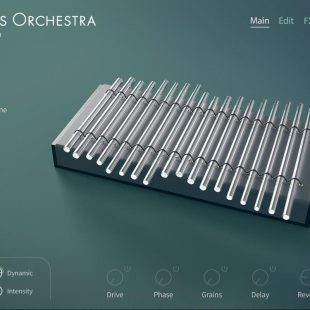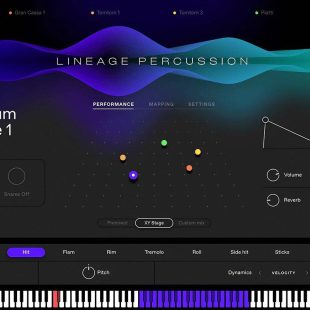Qu-Bit Electronix new stereo delay Nautilus module for Eurorack inspired by sub-nautical communications
Following in the fanciful footsteps of its Aurora spectral reverb released to widespread critical acclaim earlier this year as the then-latest addition to its ever-expanding Eurorack lineup, ‘Future Coast’ modular synth- maker Qu-Bit Electronix is proud to announce that it is taking preorders for Nautilus — newly developed as a stereo delay consisting of eight unique delay lines that can be connected and synchronised in interesting ways to act as a complex delay network inspired by sub-nautical communications and their interaction with the environment while effectively creating a one-stop shop for all things delay and upholding its creator’s cutting-edge sound design standard with a clean, beautiful aesthetic.
Achieving a stereo complex delay network inspired by sub-nautical communications and their interaction with the environment while effectively creating a one-stop shop for all things delay and upholding its creator’s cutting-edge sound design standard with a clean, beautiful aesthetic is no small feat, for what makes Nautilus so special in the densely populated modular landscape is its sheer number of effect possibilities — think present-day pitch-shifted shimmer delays, ever-evolving polyrhythms, as well as distorted echoes of the past — while maintaining a clear, intuitive front panel interface devoid of any second-guess-inducing shift functions. For example, the core of Nautilus’ delay network is built in the standard fashion for delays: a clock signal is generated either internally using the ‘tap tempo’ clock button at the center of the module, or externally via the clock in (gate input) jack just below. But the basic building blocks of the delay system are the controls for resolution, which determines the clock division or multiplication applied to the delay processor, and feedback, which determines the amount of repeats on the delay line — from one to infinite. Indeed, even these core functions can yield some incredible results when utilizing their associated CV and gate inputs.
Inspired by the ocean and oceanic exploration, Nautilus’ name is directly derived from the fictional submarine in iconic French writer Jules Verne’s timeless classic science fiction novel Twenty Thousand Leagues Under the Sea, so — much like said novel’s Captain Nemo — Nautilus’ ambitions are found in exploration, finding ways in which sound travels and interacts within the aquatic world. Ambitious as that may well sound, it is made tangible with Nautilus’ delay network design, formed from a multitude of delay lines and means to manipulate them. Thanks to an ability to have up to eight co-dependent delay lines — four per stereo channel — occurring simultaneously (with up to 20 seconds of audio each), as well as tempo-synced control over the spacing between the delays, Nautilus can use its sensors and dispersal functions to take a simple delay line into impossibly complex yet beautifully coherent cacophonies of sound. Saying that, each delay line — itself a single delay within the Nautilus network — has an ability to be reversed as well, courtesy of an incremental sensor reversal function.
Furthermore, additional complexity can be introduced using onboard chromatic and depth receptors that apply a host of internal effect processors into the delay lines, letting users further alter their sub-nautical delay network to emulate the varying aquatic materials and terrain that Nautilus’ sonar passes through with digital interference and more. Each effect — including filters, distortion, and coloring — is independently applied to the delay lines, meaning that users can utilize all of the effects using CV and apply them intentionally within the delay network.
Nautilus provides an abundance of stereo feedback behaviours on top of the existing configurability — including ping-pong-style delay, cascading delays, and Adrift, an aptly-named, unique-sounding meandering delay style — and even has a selection of delay modes, allowing access to faded delays (that remove the Doppler effect found on standard delays when changing the delay frequency), Doppler delays (that reintroduce that effect), a pitch-shifted up shimmer delay, and a pitch-shifted down ‘de-shimmer’ delay.
It is easy to assume, then, that when working with Nautilus it could potentially be very easy for things to quickly get out of hand, thanks to the sheer amount of onboard configurability. To the contrary, onboard performative functions fortunately aid in the event of a sensor overload. It is possible to freeze the delay lines, locking them in place with the clock rate, or even clear them altogether using the purge button, acting as a unique clear function that makes resetting Nautilus’ delays both simple and pleasing to the ear.
Even though Nautilus needs an audio input to function, it also acts as a modulation source. So users are able to capture its sonar output and use it to self-patch or control other points in their system — drive other parts of a patch with ‘pings’ from the delay network, or use the generated topography as a modulation source. Saying that, the output is algorithmically generated from the delay network, creating an evolving, one-of-a-kind output to render patches completely unique.
Ultimately, Nautilus hosts two onboard attenuverters, fixed to its dispersal and feedback inputs… or are they? There is, of course, more to Nautilus than meets the eye. Indeed, it is more than a module with fixed functions, one which is in keeping with Qu-Bit Electronix’s ethos of always designing with customizability in mind — from USB text files to shift functions, right through to the ambitious open-source implementation of Nebulae. Needless to say, Nautilus is no exception to this, coming complete with a free open-source app allowing users to configure a whole host of settings and functions. But back, briefly, to those attenuverters; assignable not only to any input on the module, they themselves can be assigned various functions, such as splitting the left and right channel resolutions. And as if that was not enough to be getting on with, the sonar output creates a unique CV or gate signal algorithmically generated from its findings, further configurable as envelope followers, triggers, additive modulation, and more. It is perfectly possible, for instance, to change the freeze gate behaviour or change the knob range of any parameter. Put it this way: users can choose their settings, then the web app exports a single file that can be saved onto the module’s USB flash drive, which, when reinserted into the module itself, automatically updates its settings — no button commands, no reboots, no fuss!
Furthermore, functionality and more besides is all wrapped up in an enthralling front panel with a hypnotic kelp LED interface at its center. Clearly following in the fanciful footsteps of its Aurora spectral reverb sibling from a design choice perspective fit for forward thinking, those LEDs indicate Nautilus’ numerous settings, while also acting as a VU meter for the left and right channels… from the deep ocean trenches to shimmering tropical reefs, Nautilus is the ultimate exploratory delay network.
“Nautilus is the delay processor that the Eurorack world has been waiting for,” asserts Andrew Ikenberry, co-founder and CEO of Qu-Bit Electronix, ending on a high note: “Thanks to recent advances in embedded processors, we were able to create a sophisticated delay algorithm that has never been done before in hardware; Nautilus is capable of creating entire worlds of sounds, and certainly feels like far more than just an effects processor.”
Officially released on October 6, 2022, Nautilus is available to preorder from Qu-Bit Electronix’s growing global network of distributors (https://www.qubitelectronix.com/distributors) with an MSRP (Manufacturer’s Suggested Retail Price) of $399.00.
Full details at www.qubitelectronix.com






